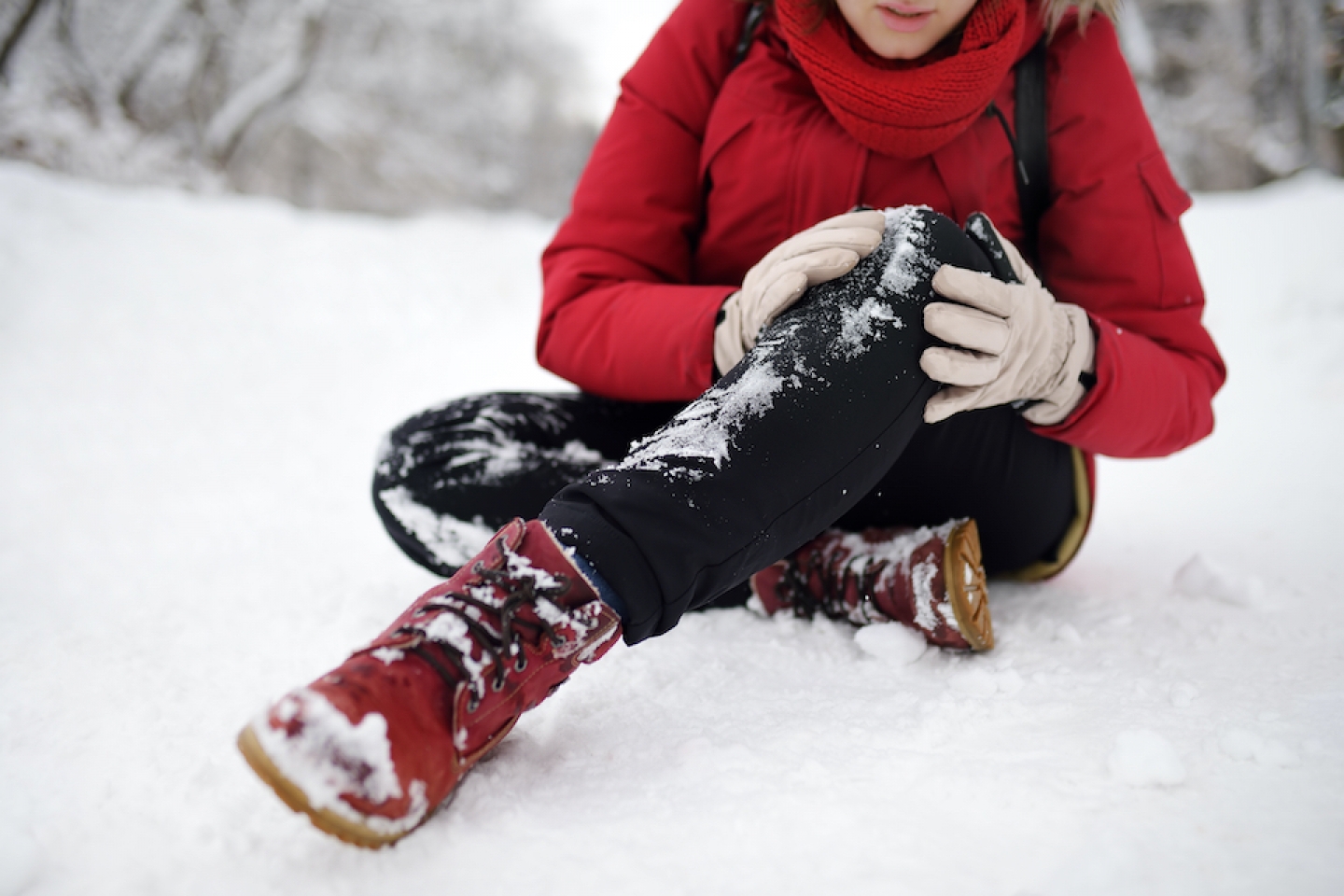
If you live in the Northeast, then the ground beneath your feet is probably frozen, and every step you take brings the risk of falling. Although most winter falls lead to only minor bumps and bruises, it’s possible to tear a muscle or break a bone, especially if you’re an older adult, says Nasim A. Chowdhury, M.D., Chief of the Department of Rehabilitation Medicine at NewYork-Presbyterian Queens. “ As men and women age, balance or mobility problems can sometimes occur. This makes the elderly more likely to suffer from a fall,” Dr. Chowdhury says. “While women are not necessarily more likely to fall than men, the higher rate of osteoporosis or bone thinning in women makes them more likely to break a bone if a fall occurs,” he adds.
Sprains and strains are the most common injuries that occur from slips and falls. Although often painful, they are not necessarily dangerous, Dr. Chowdhury says. “While not as common, brain injuries, spinal cord injuries, and fractures or bone breaks are much more dangerous injuries that can occur and require immediate medical attention,” he says.
There’s no getting around snow and ice but you can navigate them safely. First and foremost, wear shoes that maximize traction. Consider using a cane or other assist device for stability. Also, make sure your sidewalk is shoveled, even if this means asking someone to do it for you. Other ways to reduce your risk of falling include:
If you start to slip and fall, then drop anything you are holding so your hands are free to catch you. Protect your head by tucking forward if you fall backwards.
Check yourself for injuries. If you can get up, then do so by rolling onto your side and slowly pulling yourself to all fours. Then, crawl on your hands and knees toward a sturdy object like a solid chair, stairs, or a tree to steady yourself as you straighten up. Rest before attempting anything else.
If you’re too hurt to get up, then yell—or use your cellphone to call--for help. Don’t try to stand by yourself, as you may fall again and injure yourself further.
If you can’t move, then you may have broken a bone. Yet, having a fracture won’t necessarily stop you from moving. If you think you have a broken bone, or if Tylenol or other non-steroidal anti-inflammatory medicines and ice don’t control your pain, then go to the emergency room immediately. Or, Dr. Chowdhury adds, “If you fall and notice marked difficulty bearing weight across a limb, then please call your doctor right away.”
You may witness someone else fall. If you see that they have lost consciousness, seem confused, have a drooping face, trouble speaking or swallowing, or weakness in any of their limbs, then call an ambulance immediately.
Finally, if a fall results in a painful joint but you can still bear weight and move, then rest and ice the painful area. Dr. Chowdhury advises, “If the pain doesn’t improve in a few days, then call your doctor for an evaluation.”